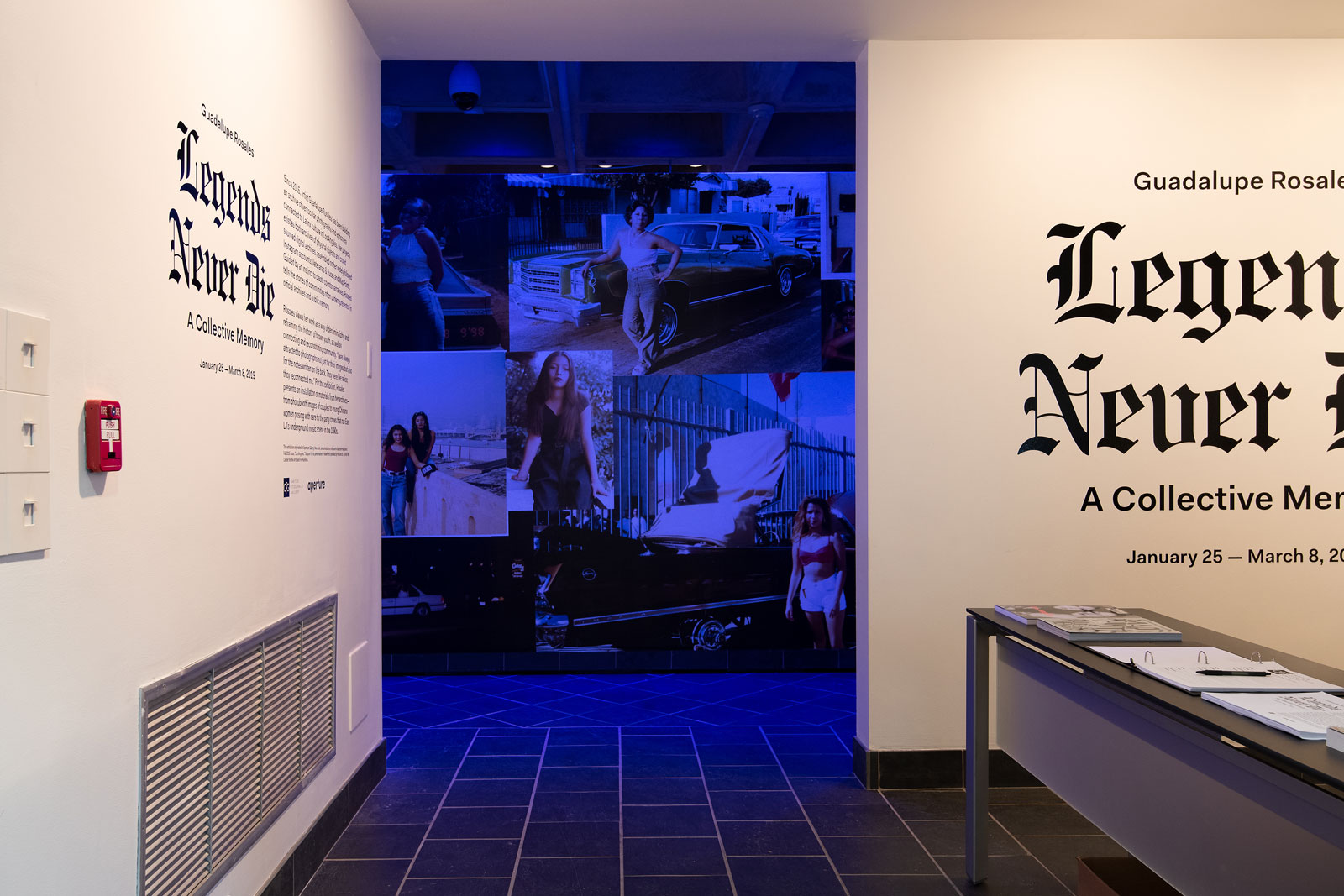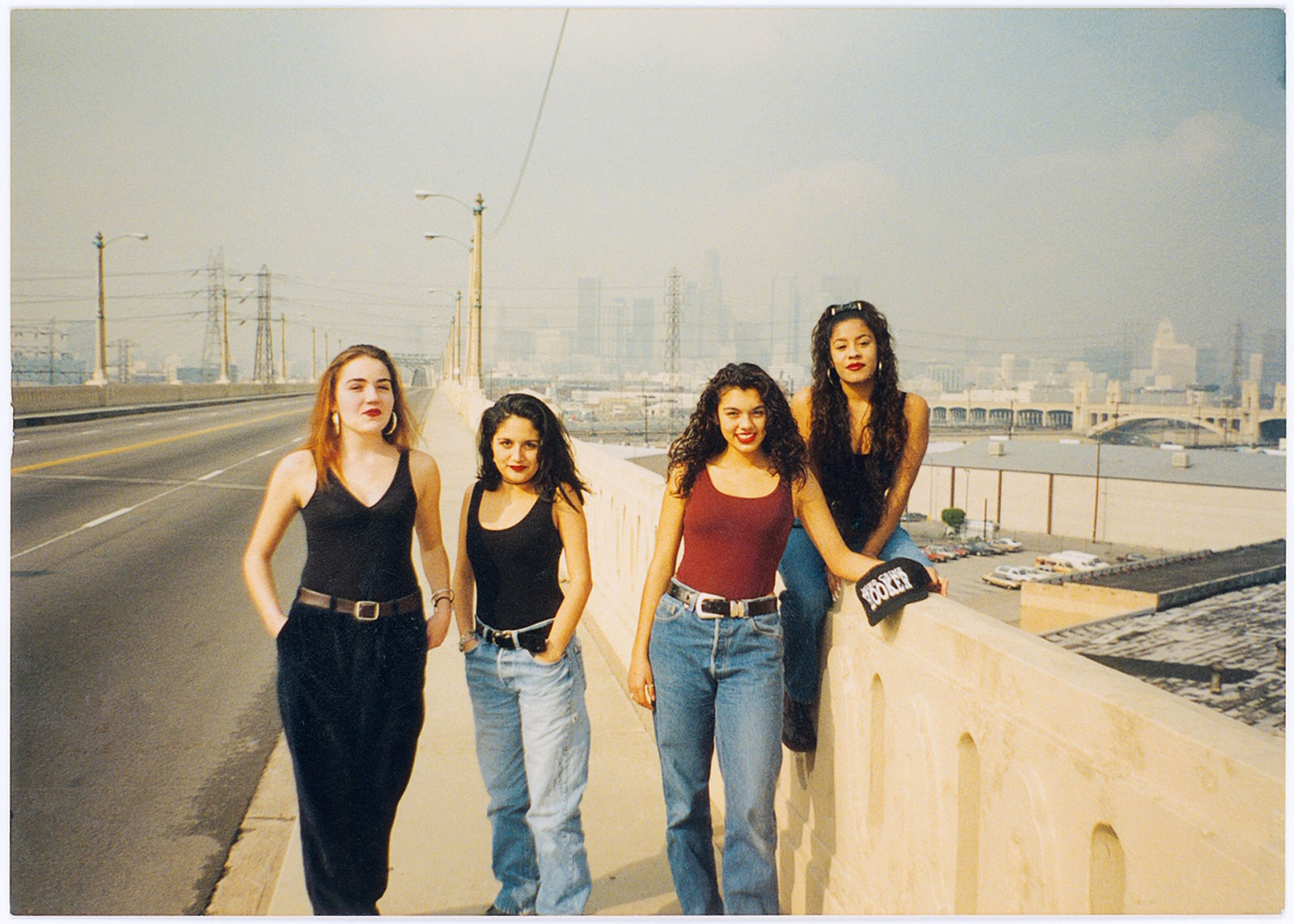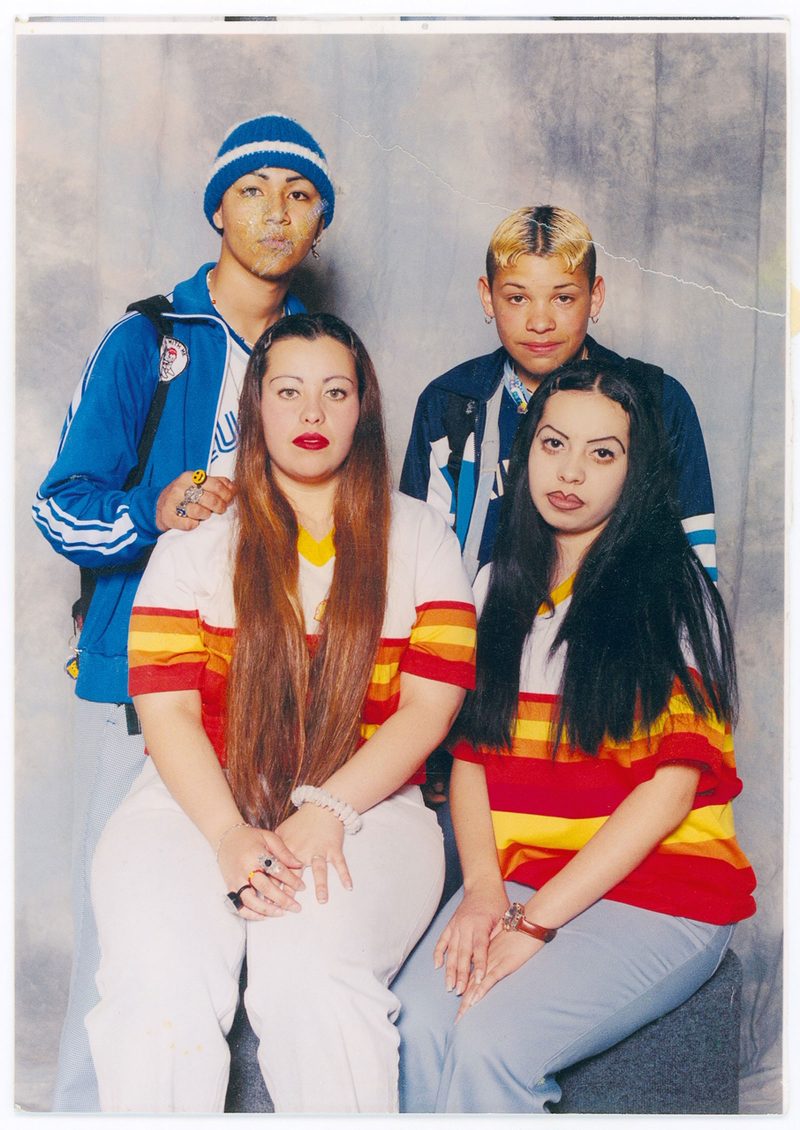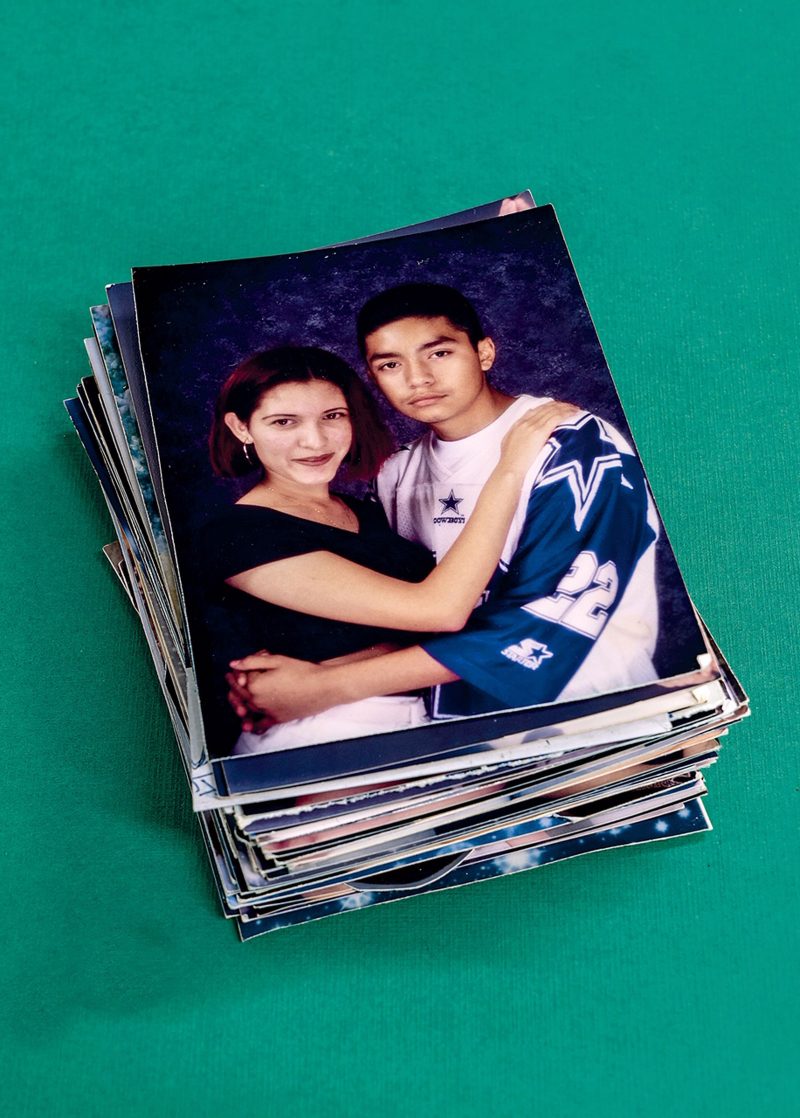ART REVIEW: Neighborhoods in conflict and the role of the artist, in Guadalupe Rosales’s solo show at Cantor Fitzgerald Gallery
 |
| Guadalupe Rosales: Legends Never Die, A Collective Memory, Cantor Fitzgerald Gallery, Haverford College. Photo: Lisa Boughter. |
So Rosales’ show, on display at Haverford College’s Cantor Fitzgerald Gallery, presents (to me) an entirely new side of the city that certainly hasn’t gotten the Hollywood treatment afforded to the Beverly Hills world of Clueless.
The exhibition of color and black and white archival photos is a physical presentation of the work Rosales has been doing for years seeking out, collecting, and sharing photographs, video clips, and other assorted objects that tell stories of 1990s Chicanx culture; accessible through her Instagram accounts Map Pointz and Veteranas and Rucas and featured in the fall 2018 issue of Aperture, Legends Never Die takes on a new level of intrigue when viewed in a dedicated setting.
 |
| Photographer unknown, Mind Crime Hookers party crew on 6th Street Bridge, Boyle Heights, 1993. Courtesy Guadalupe Rosales. |
You’ve been invited to an unabashedly cool rave scene just by entering the gallery, like the flexible space has adopted attributes of the kinds of parties advertised in the glass case. But the purple lighting takes on a melancholy air, when you consider the shrine off to the side of the room, a tribute to Anthony Alonzo, a boy who was part of the underground party scene killed in a hit and run outside a party in 1995. A sweatshirt belonging to Alonzo hangs above a small stack of votive candles, a beaded cross, a bandanna, comprising an isle of solemnity amidst the pulsing energy of the space, creating a sense of emotional whiplash that is likely more powerful in person than via Instagram or glossy magazine pages.
 |
| Swing Kids party crew from San Gabriel Vallery, 1994. Courtesy Guadalupe Rosales and Deborah Meza. |
Boyle Heights has made headlines over the last few years for its staunch activist movement, represented by Defend Boyle Heights and Boyle Heights Alliance Against Artwashing and Displacement that has opposed art galleries, hipster coffee shops, and other harbingers of gentrification moving into the area and displacing longtime residents. These movements are quite clear about what what they oppose, recognizing that gentrification can be perpetuated by people of color as well as the archetypal white business executives, and that “artwashing” and other hallmarks of redevelopment, investment, and “progress” can endanger communities by leading to increased police surveillance.
Rosales spends her time immersed in mementos of her childhood in Boyle Heights, where gang violence marked the streets as well as her own life, and expresses her desire to see her community become safer and more livable. Yet as presented in her video, Rosales’ efforts to reconnect with Boyle Heights have faced opposition from groups like Defend Boyle Heights, who argue that she and the local galleries and arts organizations she has tried to work with are promoting gentrification. Rosales asks: what is good versus bad change in a neighborhood where there used to be shootings? The neighborhood has indeed seen an explosion of development in recent years, ranging from for-profit galleries to the nonprofit collectives PSSST and 356 Mission, both of which Rosales hoped to engage to exhibit her work.
For Rosales, though, the final straw appears to be the boycotting and protesting of Self Help Graphics & Art, a local institution operated by Joel Garcia that existed in Boyle Heights for decades and has fought against gentrification in other parts of the city–hardly the same air as a ritzy gallery that swoops in and takes advantage of low property values, right? Indeed, its return to Boyle Heights in recent years, and its purchase of the building it resides in, has been cast as a win against gentrification. Yet further research on my part reveals a few reasons that activists might have to keep Self Help Graphics & Art at arms’ length: its close relationship with developers and city council members (see here and here) who may have aided it in resisting displacement, but who have also contributed to further displacement in Boyle Heights.
 |
| Photographs in Guadalupe Rosales’s studio, Los Angeles, 2018; Photograph by Mike Slack for Aperture. Courtesy Aperture. |
Comments
Post a Comment